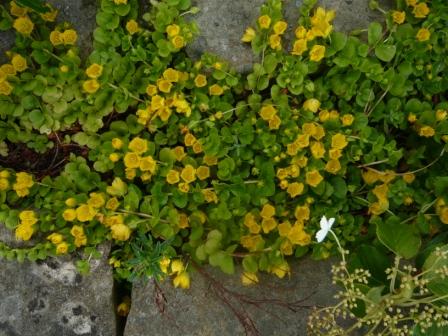Creeping Jenny Good or Bad

Beware Creeping Jenny can invade your garden if you don’t take care. In the right place Creeping Jenny or Lysimachia nummularia is a useful plant as it retains a dark green leaf through winter but has bright green leaves from spring and flowers yellow from Spring through Summer. The prostrate, creeping stems make excellent ground cover but they can infiltrate plants and damp borders and even withstands walking on.
The stems root easily and spread by creeping. This picture shows Creeping Jenny in a dry wall and whilst the flowers are smaller the plant in thriving. I do not know if it arrived by seed or via a piece of broken root but it creeps me out at times.
Sometimes called Money Wort I would save your money (and not grow it) but if you are keen many people will give you a bit just to reduce the population in their garden.
Other Resources
Royal Horticultural Society RHS ‘Gardening for All’
National Council for Conservation of Plants and Gardens ‘Conservation through Cultivation.’
Garden Organic National Charity for Organic Gardening.
BBC Gardening